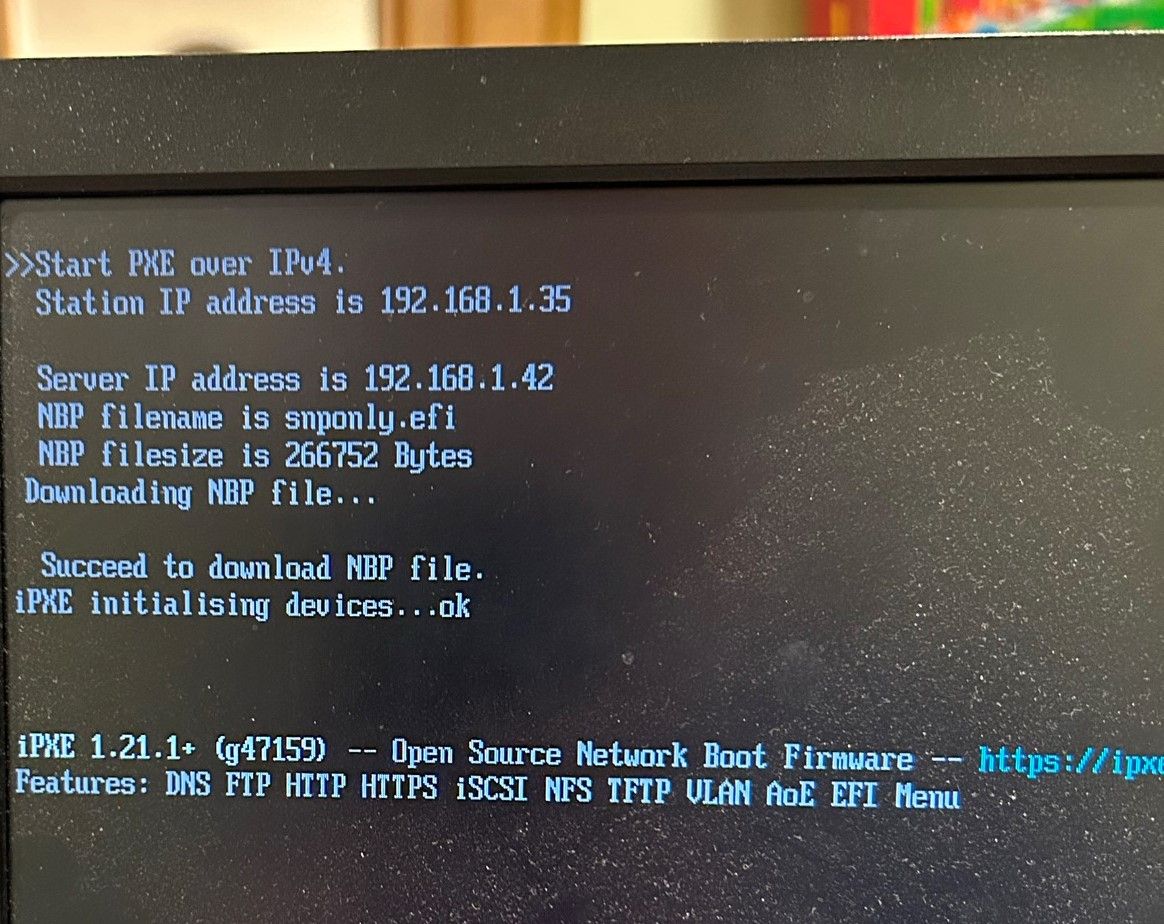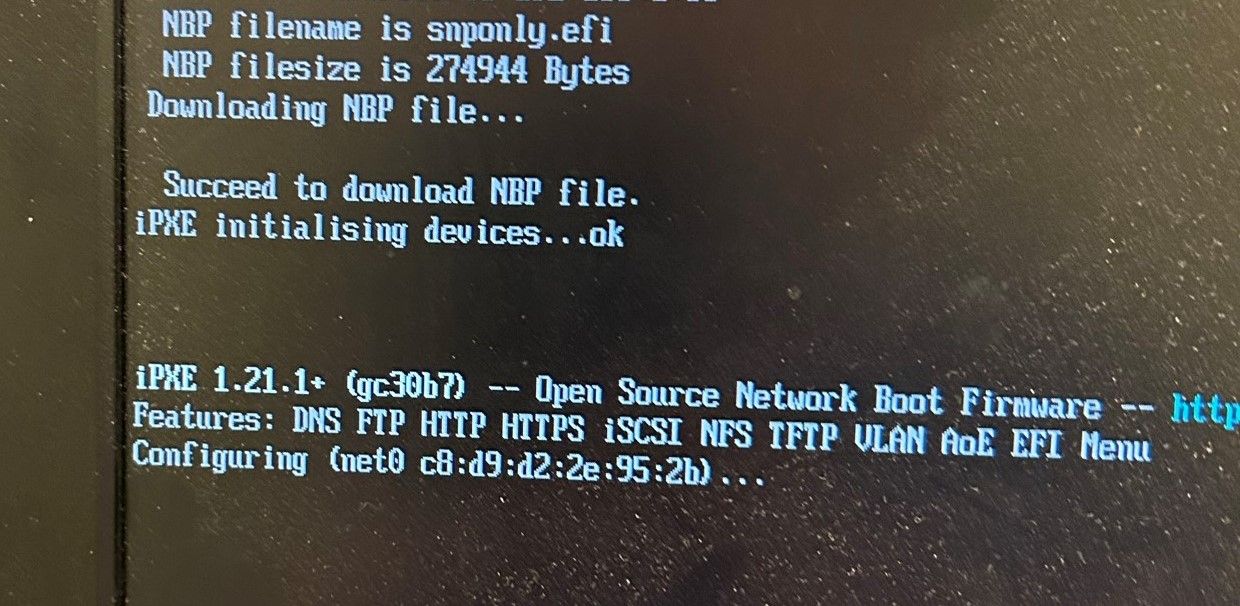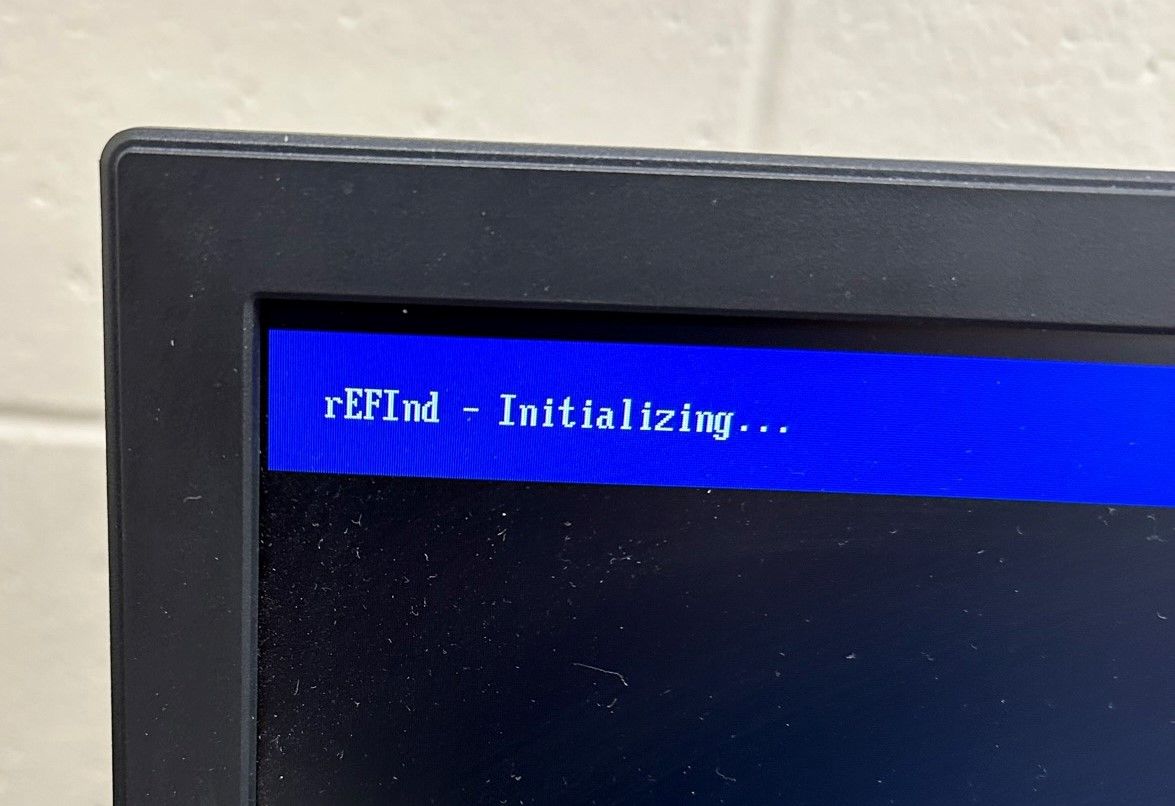HP 705 G4 - rEFInd Initializing....
-
I teach a high school computer repair and troubleshooting class using the CISCO IT Essentials curriculum. This upcoming school year we will be using some hand me down HP Elitedesk 705 G4 computers as the Bench PC’s for the labs in this class. To make it easy to manage the OS on each computer, and to make it easy to restore the OS on all of the computers after the students mess them up during labs, I use FOG on a standalone network to PXE boot the computers and install our Windows 10, and now also Windows 11, images.
We’ve been successfully using FOG for the past 3 years but always with Legacy Boot. This is the first year we’re using UEFI and are having trouble getting the HP 705 computers to exit out of PXE boot. At this point we can capture an image from a computer host just fine. We can deploy an image to a host just fine. But no matter what I’ve tried so far I cannot get it to successfully boot to Windows if the boot order is set to PXE boot first and there are no tasks pending.
These PC’s are set up with UEFI so I’ve got our FOG imaging server set up to use rEFInd for our PXE exit option. This successfully gets it to exit PXE but then we get to a screen where it says, “rEFInd - Initializing” and it hangs up at that point.
If I set the UEFI boot order to boot from the m.2 drive first, and PXE second, it boots to Windows fine.
If I set the UEFI boot order to PXE boot first, if I hit f9 to go to the boot menu after POST when I choose the UEFI Windows boot option it boots Windows fine.My best guess is that for whatever reason it’s not finding the UEFI bootloader on the m.2 drive when exiting PXE.
We’ve updated the firmware to the most recent version. I have it set to legacy boot disabled, secure boot disabled. I had also tried it with Legacy disabled and secure boot enabled and that didn’t work either.
I see from the forums that this appears to be a fairly common problem with HP computers. Does anyone have some suggestions about how to get this to work?
Thanks!
-
You can disregard the questions in my previous post. IT’S WORKING!!!
I downgraded refind to version 0.11.0. That was the solution for the HP Elitedesk 705 g4 model.
THANK YOU to anyone on this thread who tried to help me. Particularly @george1421. I really appreciate it!
-
@spchristy The refind code comes from another opensource project. You might want to try to see if a different refind kernel works differently.
https://sourceforge.net/projects/refind/files/
The last version of refind I knew was shipping with fog is 0.11.5, @developers please correct me if I’m wrong. You should try the latest and 0.11.0 was also known to be a solid version. With the issue with m.2 drives I might think the latest version would have better luck since it should be familiar with nvme drives.
The refind files are in
/var/www/html/fog/service/ipxedirectory on the FOG server.
On a slightly different topic of quick restore. There is an option in FOG configurations (I’ll have to look it up), to where it will only allow the defined image to be deployed to the target computer. With that set, you can use the deploy image menu from the FOG iPXE boot menu to quickly deploy the image to the target computer without having to schedule a job. You can do the redploy directly from the console of the target computer. If that helps streamline the restore process.
-
@george1421 Thanks for responding so quickly.
Along with the upgraded computers I decided to also rebuild my FOG server on a better computer so I installed FOG version 1.5.10. My understanding is that v1.5.10 uses refind 0.11.0 ? I had tried previous versions of refind that were mentioned on the forum for other HP model computers that had the same problem but none of them worked. At this point I’ve got nothing to lose so I’ll download 0.11.5 and give it a try.
As for the quick restore suggestion, I actually use FOG for quite a bit more than just restoring the OS to it’s “unmessed up” state. For the class I teach FOG has actually been a lifesaver and though it sometimes takes me a long time to get everything tweaked so my imaging works, during the school year it saves me a TON of work. I’ve actually recommended FOG to quite a few other teachers I know that teach hardware repair and networking types of classes.
Here’s some of the ways I use FOG:
-
I create my clean Windows Image for what I need (Windows 10 and 11 now, formerly Windows 7, 8, and 10, etc). I have 30 bench PC’s that students work on. So once I have my Windows Image set up exactly how I want it I save a raw version of the image just in case something goes wrong when I provision and then sysprep my base image, or if down the road I need to make changes to my base image. After sysprep I then upload my sysprepped image to FOG. Then I push out the image to all 30 computers at once. On my standalone network all the computers are reimaged and ready to rock within a 35-40 minutes.
-
Later in the trimester students upgrade the bench PC’s to Windows 11. After the lab is done, I push out my Windows 11 image so all of the bench PC’s have the exact same image and settings.
-
When students do a lab (ie, Windows security configuration, setting up remote desktop, installing drivers, installing peripherals, updating Windows, creating a VM running Ubuntu, etc) by the end of class every bench PC has something different on them. All I do is go to FOG, pick my class group for the image I want to deploy, and bam, 35 minutes later everything is back to a perfect Windows install so problems don’t carry over into other labs. Where this is even more handy is when I sometimes have 2 sections of the class in the same trimester. With FOG, period 1 can do the lab, I pick my group, click deploy, and 35-40 minutes later all of the PC’s are reimaged and I’m ready to go for the other section of class. Without FOG there is no way I could teach 2 sections of the class in the same day.
-
I even have numerous FOG images saved for lab tests where I’ve sabotaged things, like in a network lab where I disable the NIC, or assign a static IP address outside of the network class we’re using, and save the messed up image and then students have to use the troubleshooting process I teach them to figure out what’s wrong and fix it. What’s really cool is I created random groups on FOG so students won’t have the same thing to troubleshoot as the person sitting next to them.
-
FOG also comes in VERY handy when a student is absent for a lab. I can push out to a bench PC the specific image needed for the lab they need to make up in a matter of minutes.
I’m kind of rambling on here, but seriously, there is no way I could do the things I do in my class if it wasn’t for FOG. The frustration I often have during the summer building my base images when I get different Bench PC’s to work on, is well worth the effort when the school year rolls around.
Thanks for the refind version advice. I’ll give it another shot and let you know how it goes.
-
-
@spchristy said in HP 705 G4 - rEFInd Initializing....:
My understanding is that v1.5.10 uses refind 0.11.0 ? I
Well it would be interesting to hear what version the developers released with FOG 1.5.10, I was thinking 0.11.4 was the released version. If you look at the sourceforge site they are already on version 0.14.0.2. I don’t know if that version fixed anything in relation to the HPs or not. I can say that version 0.11.4 was released in 2018 so it might not be aware of more modern hardware.
As for how you use fog, well done!!
-
@george1421 Is there an easy way to tell what version of rEFInd I have installed?
Last night I went the ./buildipxe.sh route assuming that it would install the most recent version (0.14.0.2). My version code went from g47159:

to gc30b7.

I don’t know what version that means I now have, but I do know that it didn’t fix my problem. I’m still stuck at this as soon as it leaves the FOG client screen:

I know that FOG isn’t the problem here. Everything on that side of the equation seems to work fine. For some reason it’s just not finding my UEFI boot when it exits PXE.
-
I had this issue too, downgrading rEFINd to v11.0 fixed it.
-
@spchristy said in HP 705 G4 - rEFInd Initializing....:
Last night I went the ./buildipxe.sh route assuming that it would install the most recent version (0.14.0.2).
OK you have a conflict here. The buildipxe rebuilds the iPXE boot loader (not a bad thing to do to stay current). But that has noting to do with refind. Refind is its own critter. Refind is only installed from the fog installer, and its never made current. Its only what version is release when new version of fog is created.
Just to test, see if it works, change your UEFI exit mode from refind to EXIT. EXIT is a built in function of iPXE. Where refind.efi gets called (chained) from iPXE then iPXE leaves memory.
-
@george1421 Now that I re-read the page I found online where I got my ./buildipxe.sh idea from I can see I totally misread it. Duh. Thanks for pointing me back in the right direction. No wonder it didn’t help.
Last night I got a little closer. I moved the 0.11.0 version of the refind.efi/refind_x64.efi files in to replace whatever ones come with FOG 1.5.10. When I did this it booted to the refind interface and then stuck there. It also threw an error message about not being able to find the icons. It never got beyond the refind interface but at least I didn’t get stuck on the refind - initializing thing - progress.
Am I correct that I can just download the version of refind that I want, Get the files out of the ISO I downloaded, remove the old refind.efi and refind_x64.efi files, mv the new ones in their place, and then that’s all I have to do? I don’t have to run something to install or register the new files, or anything like that, correct?
In the process of putzing with this last night I managed to wreck my FOG server so I’m going to wipe everything and rebuild it today so I have a fresh start. After I rebuild, would it be best for me to try refind v 0.11.x again since that seems to be the one that everyone talks about as the best choice with the HP computers, or would using the most recent v0.14.x be a better choice?
As for setting the UEFI exit mode to EXIT, I had tried that previously and what it does is it goes to the FOG PXE menu screen, waits for the 3, 2, 1 countdown, exits, and then the FOG PXE screen reloads and it continues to loop like that until I force shutdown.
Thanks again for correcting my misunderstanding on the buildipxe thing and for all of your suggestions. I guess on the positive side, thanks to you, over the last week I’ve learned a lot more about ipxe, refind, and Linux than I knew before…

-
You can disregard the questions in my previous post. IT’S WORKING!!!
I downgraded refind to version 0.11.0. That was the solution for the HP Elitedesk 705 g4 model.
THANK YOU to anyone on this thread who tried to help me. Particularly @george1421. I really appreciate it!
-
S spchristy has marked this topic as solved on